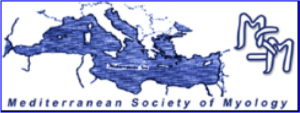McArdle’s disease is the most common metabolic myopathy of muscle carbohydrate metabolism, due to deficiency of myophosphorylase and alteration of glycogen breakdown in muscle. The clinical manifestations usually begin in young adulthood, with exercise intolerance, exercise-induced muscle cramps, pain and recurrent episodes of myoglobinuria. Many patients experience the second wind phenomenon, characterized by an improved tolerance for aerobic exercise approximately after eight minutes of motor activity, secondary to the increased availability of blood glucose and free fatty acids associated to an enhanced glucose uptake by muscle cells. In this study, we aimed to test a multi-parametric protocol in order to detect the impairment of muscular metabolism and motor performance in patients with McArdle’s disease. We enrolled 5 patients and 5 age-matched healthy subjects, that were evaluated by: (1) monitoring of physical activity with an electronic armband; (2) testing of cardiopulmonary, metabolic and respiratory responses to exercise with a cardiopulmonary exercise test and analyzing muscle fatigue during exercise test by surface electromyography (4) evaluating blood lactate and oxidative stress biomarkers at rest and during exercise. The patients were tested at baseline and after three days of carbohydrate-rich diet integrated with tricarboxylic acid cycle intermediate and creatine. The multi-parametric protocol proved to be useful to detect the oxidative capacity impairment and the second wind phenomenon of patients. We did not observe any significant differences of muscle metabolic response during the exercise test after three days of carbohydrate-rich diet.






